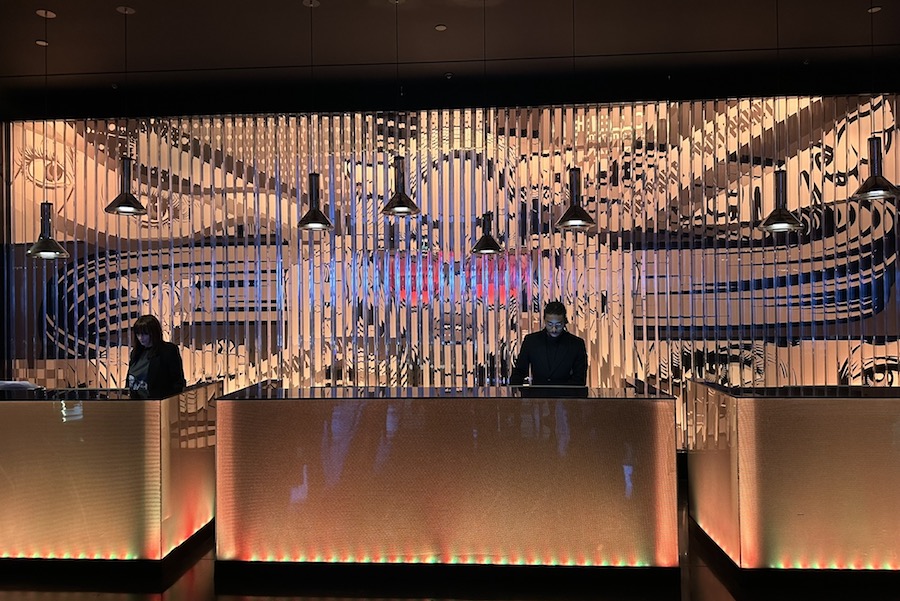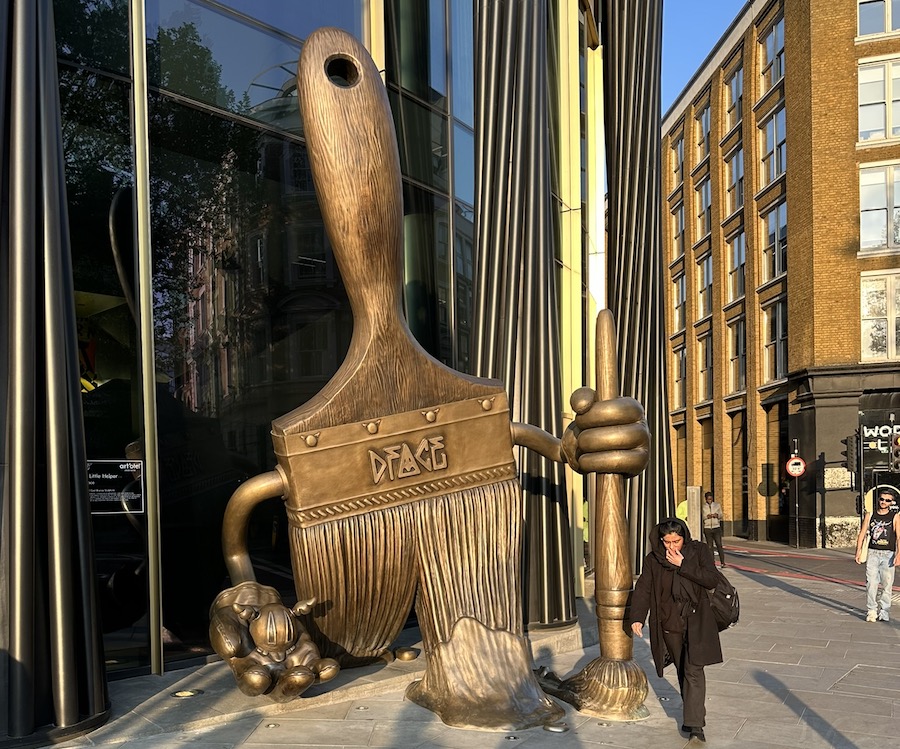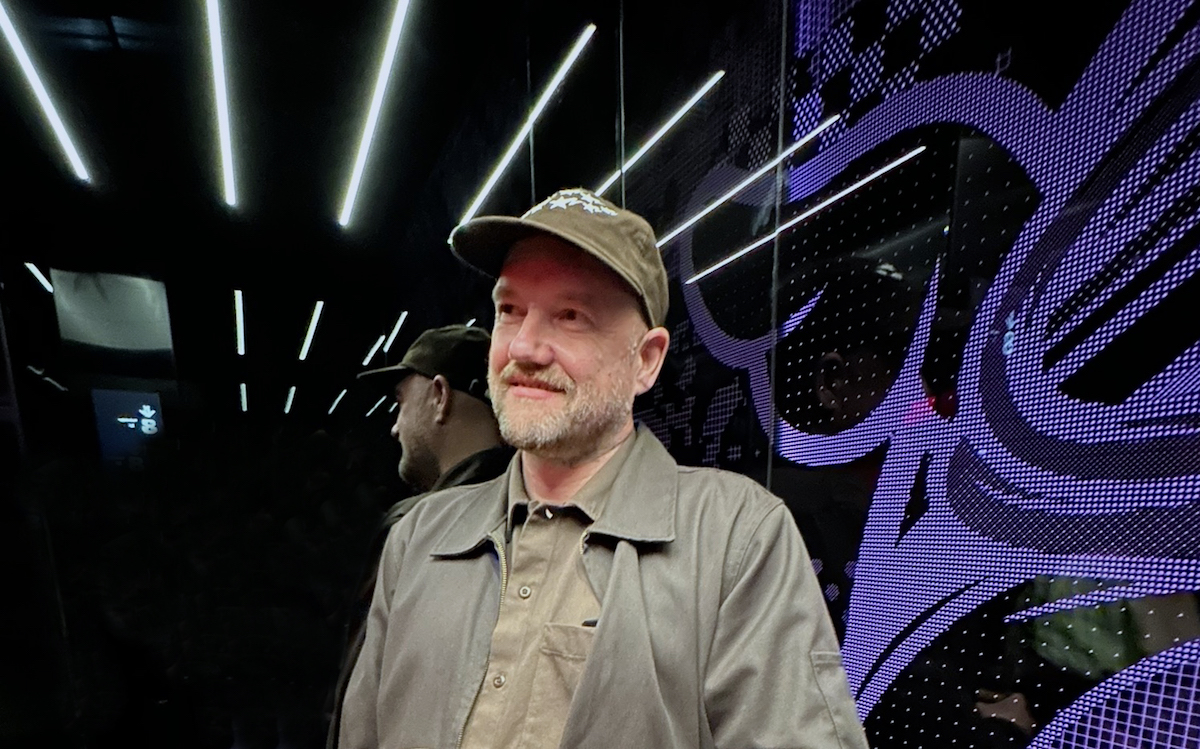London’s streets have long been a battleground for visual dissent, but few have weaponised pop iconography as precisely as Dean Stockton, better known as D*Face. Emerging in the late 1990s, his work dissects celebrity, consumerism, and mortality with the gleeful irreverence of a vandal armed with a PhD in visual culture.
Trained as an illustrator but disillusioned by commercial art’s constraints, he turned to wheat-pasting and stencils, transforming East End alleys into a rogue gallery. His early pieces—twisted takes on Warhol’s Marilyn and corporate logos—were less street art than “cultural jamming,” exposing the fractures beneath glossy surfaces. By 2005, his “Death & Glory” series reimagined skate decks and album covers as memento mori, splicing punk aesthetics with Renaissance vanitas symbolism.
Unlike peers chasing institutional validation, D*Face built his own ecosystem. His StolenSpace Gallery (est. 2007) in Shoreditch became a hub for artists operating outside gallery orthodoxy, while his commercial collaborations (from Nike to Uniqlo) deliberately blurred the line between establishment and subversion.
How do you describe your practice?
“A’Pop’calyptic” was the term coined many years ago. I still like that today. I see my work as a kind of post-mortem to Pop Art, and a kind of picking up from where I thought it started to lose its way in the criticism of consumer culture. I wanted to bring the rebellious, anti-establishment attitude of skate and punk culture that I had grown up with and apply that to the Pop genre, which I felt had failed in its aim; to subvert consumerism in the way it was supposed to, and had ended up being a celebration of it, well at least that’s how I make sense of it.
Your work channels Punk and skate culture. How did these subcultures shape your instinct to intervene in public space rather than conform to traditional art pathways?
More than anything, skateboarding encouraged me to see the city through different eyes. Features of buildings, parks, pavements, etc, that were designed with aesthetics or day-to-day functionality in mind, were viewed with a completely alternative purpose when you’re looking for that perfect spot to skate, particularly in my era of skating as a teen. There was an absolute lack of actual, dedicated skate spots, which forced us to seek out alternatives. The same could then be passed down to painting when you start to see the street as a canvas and the city as your gallery.
Punk and skate culture also both carry that DIY ethos that was (and still is) crucial to me and the urban contemporary art scene. Hand-screen printed tees, stickers, prints, photocopied paste-ups, fan-zines, etc., just making do with what resources you had at your fingertips, which were all passed down from punk and skate ideology. You see it less and less nowadays, which is a real shame because you look back on all the relics from that early time, and they’re so cool to see – they speak so much of that time and the energy that came with it.

You’ve described Warhol and Lichtenstein as touchstones, yet your work subverts their celebration of consumerism. Is your pop aesthetic a Trojan horse for critiquing the very system it mimics?
Exactly. Pop was supposed to be the Trojan horse, but it felt like the soldiers climbed out of the horse and then just decided to team up with the side it was supposed to be fighting with. I thought that it’d be worth a second shot.
If you could own one work of art, what would it be?
Great question. It’s tough to choose, but I’m going to go with a kind of anti-answer here and say a James Tyrell installation, probably Roden Crater, which you could argue isn’t an ownable piece of work, but that’s what I like about it. It’s a bit more intriguing than owning a piece that hangs on your wall at home. I like the (semi)public side to it as well, that it can’t be kept private and hidden like a canvas. Such a monumental artwork will always remain public, as hard to reach and exclusive as it is; you have to seek it out, it’s a commitment. The experiential nature of his work and the complete sensory experience make his work so special. He’s one of, if not my all-time favourite artist.
With murals globally and now the Artotel commission, how do you navigate the tension between street art’s anti-establishment roots and its embrace by commercial spaces? Does context—a hotel vs. a derelict wall—change a work’s meaning for you?
That question implies that I only ever set out to create work in public spaces, which isn’t the case. I worked within the public domain because at the time, there was nowhere else, or at least it felt like it. When you bring that kind of work indoors, it’s paradoxical to still refer to it as street art. You need to figure out how your work operates within that gallery setting. Maybe for some artists, that doesn’t mean a lot has to change, but for others, it may mean completely changing what you do. By default, working outside is disruptive, political and challenges ownership, but when you’re in a gallery, that’s no longer the case.
For me personally, any opportunity where I get to explore new avenues for my art, ones that uphold artistic integrity and don’t threaten to compromise my work, I’ll take those with both hands. The art’otel was precisely that – a chance to create work on an entirely new scale and work across a host of formats that I’d never had the opportunity to before.
As a gallerist, what gaps in the system were you trying to address when you founded StolenSpace in 2005? How has the urban art scene’s reception shifted since then?
When I founded my first gallery, The Outside Institute, I didn’t aim to bridge any gaps necessarily. I was looking around at this yet-to-be-defined scene of artists and friends who were all working secondary jobs on top of creating, to pay the bills, primarily because working in the street didn’t bring any return. With little exception, we were giving away everything that we were creating. We didn’t mind so much because it felt exciting, but at the same time, it wasn’t very sustainable; we had bills to pay, rent, etc. The few indoor spaces that would showcase our work were bars. Though it was cool of them to support what we were doing, it’s hard to be seen as legitimate when the people seeing your art are primarily there to drink and get wasted, not to buy a painting. At least with a gallery, the getting wasted comes under the guise of selling some art, and the drinks are free!
There was a collective feeling that there needed to be a gallery space dedicated to showing the genre of work we were creating, but for the longest time, it was all talk; no one stepped up, myself included. I had never set out to be a curator or gallery owner. I’d thought of this as being someone else’s intention or dream, but the opportunity to open a space presented itself to me and I just jumped at it. I thought, “Well, if no one else is going to, I’d better have, if I believe in it this much, I’d better show conviction!” I had no idea what I was doing, but there were a lot of eyes and attention on the yet-to-be-named genre, so openings were a real buzz. No one was buying much, though, and the scene was still pretty misunderstood – people were struggling to understand the value of what we were doing. For us, the lack of sales and the fact that the neighbourhood hated us were our demise, as it would be for any gallery. Ultimately, the Outside Institute had no choice but to close its doors. I think it had perhaps been a premature venture, but it did teach me a lot of the dos and don’ts of how to run a business, which meant that I was able to spawn StolenSpace from its ashes, which is still alive and kicking all these years later. Two decades later, actually!
The scene has, of course, changed a lot in that time. Urban art has become a part of our collective visual landscape; it’s no longer the cave-dwelling, underground creature that it started as. Banksy, of course, has had a large part to play in that, who, amongst others, catapulted Urban art into the collective consciousness. It has its upsides and downsides. I don’t know that I’d go back necessarily, but there’s a lot of it that I miss from those underground days.
Your sleeve designs for Blink-182 and Christina Aguilera brought your work to a mass audience. How do you reconcile the immediacy of street art with the permanence of album art—a cultural artefact meant to endure?
Challenges to visibility and permanence weren’t things that urban artists sought out. At least, for me, they weren’t. They were more of an Achilles’ heel, if anything. They were just embraced into the genre and celebrated for the ephemerality that was unique to the genre. I’ve come to appreciate that more and more over time, but now and then, it is nice to create something that has real, significant physical and cultural permanence. Album artworks are a perfect opportunity. Plus, alongside skate graphics, album artworks were a massive source of visual inspiration to me, so it was great to contribute something back into that for those albums.
The art’otel project returns you to a neighbourhood that’s evolved from a gritty creative hub to a manicured “arts district.” How do you reflect on Hoxton’s gentrification while contributing to its new identity?
I wouldn’t call it manicured; it still has that grit in places. It’s not the same as it was, but that’s the same with anything that gains traction and popularity in that way. Its soul gets stretched thinner and thinner, which makes it harder to find. The artists who brought that area to life were forced to look elsewhere for studios and spaces, including myself, which is a shame, but it’s also inevitable. As a whole, I’d say the area still celebrates the urban art scene, albeit you could argue there’s some disingenuity to it. People from all around visit the area purely for that art connection, and that helps the wider scene, so I don’t think you can say it’s all bad.
Specifically with regards to the art’otel, they could have just built that hotel and hung the walls with generic hotel artwork. Still, instead, they decided to honour the area’s heritage by bringing on board an artist with a long connection to it. I see that as an evolution of the area. Pretty much all the work in the hotel is entirely public, too; it can be enjoyed by anyone who wants to go in and take a look, which was essential to me when considering the project.

Did you use a British foundry to forge your monumental bronze outside the Artotel?
Yes, the foundry is based just outside of London. They were a great team to work with, and I couldn’t be happier with how it came out. I wanted the sculpture to be made in the UK, I liked the idea of a British artist working with a British foundary, but there’s a reality to the cost of that ‘ideal’ and that really is a substantial financial uplift, one that I’m not sure people even care about or would even know about, but it was important to me. It wouldn’t be truthful to say that options elsewhere weren’t considered, but ultimately, it all fell into place. I’d love to work with the foundry again; they understood what I was trying to achieve and shared my vision. Bronze sculptures are kind of the pinnacle of public artwork in my eyes, and when I took on the Artotel project, a large public-facing bronze was the top of my ‘must do’ list presented to them.
Works like D’s Little Helper invites tactile engagement. Why is physical interaction—whether cranking a machine or touching bronze—so vital to your practice?
I’m keen to avoid the sort of reverential treatment too often bestowed upon public sculpture. Not to say that I don’t want people to be impressed by it – you don’t make a five-meter-tall sculpture without the desire to impress, but I didn’t want it to seem too much like something to step back from and be admired from afar or be uninviting. I wanted to encourage interaction with the sculpture. The ethos of urban art is that it’s supposed to be inclusive, art for everyone, and I want to carry that into my public sculptures as much as possible, even if it might not be the traditional or the practical approach. D’s Little Helper is a gentle giant, and I wanted people to get that sense when they came across it, that they want to get a selfie with it or climb aboard!

Your depictions of figures like the Queen or Marilyn Monroe walk a line between caricature and reverence. How do you decide when to skewer versus when to memorialise?
Another good question and a topic that is often discussed in the studio. I don’t know that there’s a barometer that can be applied. It feels right when it feels right. The Queen felt at ease because so many of us love to hate on the royal family. At the time I first made those works, I was exploring the idea of icons (or “eyecons” as I referred to them) and what they meant to us and contemporary society, rather than what they’d meant at their peak of popularity.
The D*Dog Phenomenon: That winged mutt has become a global tag. What does this recurring character represent to you now versus when you sketched it 25 years ago?
It’s my first child. Crazy to think of all the iterations over the years, all the places we’ve been together. I often think of how far it’s brought me and how different my life would have been had I not created it all those years ago. I guess it’s a testament to perseverance, repetition and self-belief. Plus a large dollop of hope and luck, too. First child, first dog, best friend – hopefully, some people out there feel and have their connection to it, otherwise all those stickers are purely for my enjoyment… which to be honest is also fine because I LOVE putting up stickers!!
If you could ‘D*Face’ one unsuspecting public monument or corporate logo tomorrow, what would it be—and why?
I’ve always said that the Statue of Liberty would be my number one pick. Now, more than ever, that would be such a significant defacing of a global icon. Big Ben would also look great with a pair of wings on it, too, though…
The world is a very volatile place at the moment. Do you find your work getting more or less political?
Overall, I’d say less political. We live in a time where news is so fast, so global and for the most part, pretty depressing, not to mention hard to decipher and heavily manipulated. I don’t feel that I want to contribute to that information pile with my art. It’s such a complex landscape to navigate, and I am far from a politician. I listen and pay close attention to the news and politics, trying to stay up to date and on top of the political and social climate. Still, actually at the moment, I feel more like turning off and tuning out all this political noise vs leaning in. I think I’d rather that people enjoy my art as art, rather than try to share my political ideologies – people need a break from that now and then, maybe now more than ever. I wish peace would be more prevalent and given as the first response, not the last.
Interview/Photos © Artlyst 2025 Photo 3 D* Face Courtesy of The Artist

